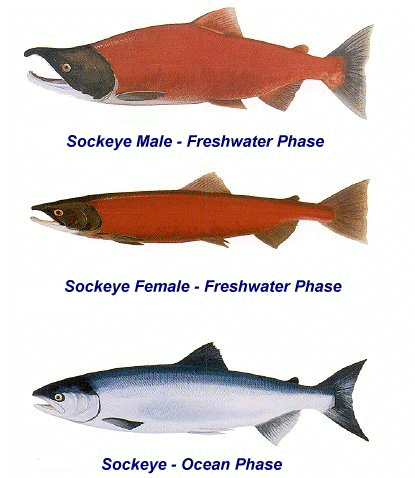
Oncorhynchus nerks
Red salmon, blueback salmon
The sockeye salmon is greenish-blue with fine black specklings on the back and no large dark spots. Spawning males have pale green heads, dark jaws, pale undersides and bright red bodies. Spawning females look generally the same, except for more subdued coloration.
The sockeye feed on small plankton and drifting organisms and a variety of land and water insects. They will also eat worms and other salmon eggs..
In North America, important sockeye salmon spawning populations occur from the Columbia River northward. Stocks originate primarily from tributaries and lakes in Bristol Bay, Alaska and the Fraser River in British Columbia. Two sockeye runs originate in Puget Sound, in Lake Washington and Baker Lake. There are two more on the Northern Washington coast, in Lake Quinalt and Lake Ozetta. Columbia River runs originate in Lake Wenatchee and Osoyoos Lake.
Sockeye salmon rely on stream and lake habitats as well as the offshore waters of the Pacific Ocean during their lifecycle.
The adult sockeye salmon will reach lengths of up to 33 inches and a weight of 15 pounds. The lifespan of the sockeye salmon is 4 to 5 years.
15 pounds, 3 ounces (Source - IGFA)